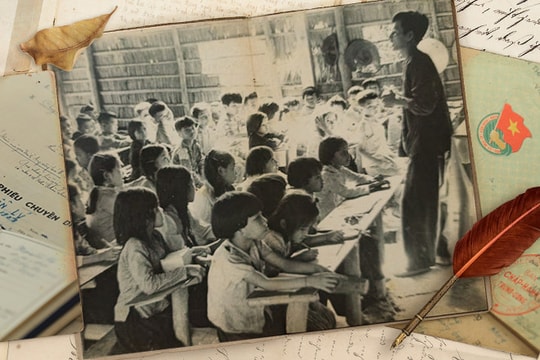Medical Education Delegation K271: Celebrating 53 years of crossing Truong Son to fight against the US
(Baonghean.vn) - During the resistance war against the US to save the country, tens of thousands, millions of men and women from the North crossed Truong Son to the great frontline in the South to directly participate in the resistance war against the US to save the country, including the Civil Affairs cadre group consisting of 151 members from the two sectors of Education and Health.
According to the Official Dispatch of the Central Organizing Committee sent to the Department of Operations of the Ministry of National Defense, the group was established after November 20, 1970 in the forest next to Road No. 6 Xuan Mai (Hoa Binh). The group consisted of 151 members, organized into 7 branches, of which 15 comrades went to the battlefields of Binh Tri Thien and Zone 5, 136 comrades went to the battlefield of the South. The group consisted of two-thirds of teachers and management staff from all over the Northern provinces who had just undergone 4 months of selective training at the T105 Training School of the Ministry of Education in Ban Yen Nhan, Hung Yen province, and one-third of doctors who had just graduated from secondary schools and universities of the Ministry of Health. This was a "special elite" force, strengthening the new human resources for the two sectors of Education and Health of the Southern revolution. The group departed from Doi Can Street, Hanoi on January 27, 1970, so it was often called Group K271.
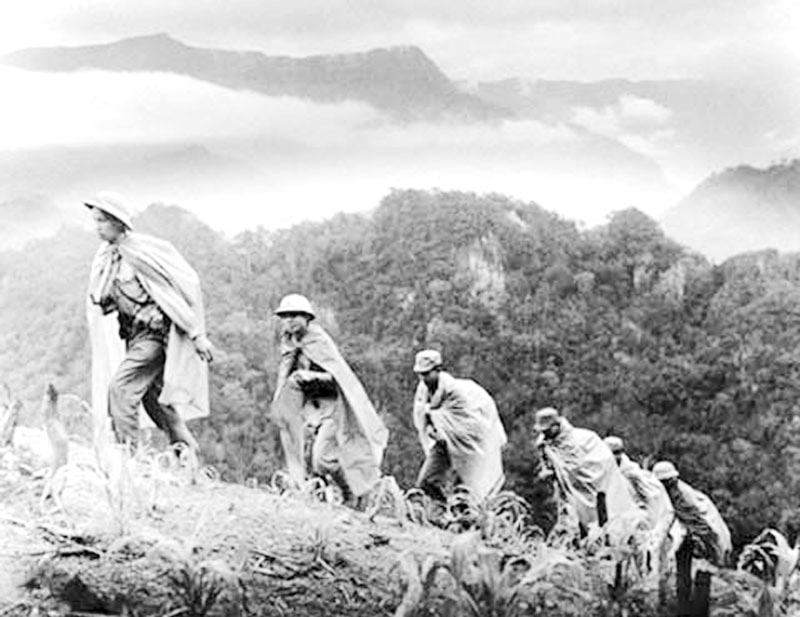 |
Troops marched into the Southern battlefield via the Truong Son route. Photo courtesy |
The historic march
In the last days of December, before the Lunar New Year of the Dog in 1970, more than 150 young men and women said goodbye to their beloved North, eagerly carrying their backpacks and setting off to cross the Truong Son mountain range. After 2 days traveling by train and car to gather in Cu Nam, Quang Binh, the group began to wade through streams and pass, marching on foot on the Truong Son mountain range. Although they had been trained for more than 3 months carrying backpacks of bricks, guns and ammunition at the Central Unification Committee's Training School in Hoa Binh, they still encountered fierce difficulties when traveling on the Truong Son road.
After a month of marching, the group said goodbye to 15 comrades and split off to two battlefields: Binh Tri Thien and Lien khu 5. The remaining 136 comrades included 94 teachers and 42 doctors and nurses. Teachers and doctors who were used to blackboards and chalk every day, and to hospitals and patients, now had to climb mountains and wade through streams, carrying heavy loads for months.
When the nearly 3-month march into the Southeast region was only 4 or 5 liaison stations away from the Central Bureau's Organizing Committee's assembly point in Base Area R (Tay Ninh), they encountered the Indochina sweep. The US imperialists and the Saigon puppet government mobilized more than 100,000 troops to attack the Central Bureau's base in Tay Ninh and cut off the 559 line supporting the South.
For more than 3 months, surrounded by enemy, under heavy B52 bombings; under the fierce sound of artillery and bombs, more than a hundred people, along with army units, fled to fight the enemy and hid in the forests along the Vietnam - Cambodia border. At this time, the Lon Nol coup broke out in the Cambodian political arena. There was no longer any safe land, the communication lines inside and outside were cut off by the enemy. The rice and salt logistics warehouses were occupied by the enemy. The whole group lived precariously, gasping for breath with betel leaves, taro leaves and various kinds of wild bamboo shoots. For a whole month, there was not a single grain of rice or salt. Lack of rice was already miserable, lack of salt was even more miserable. The most pitiful were the female doctors and nurses, only 19-20 years old, who had to endure severe malaria. There were days when 20 people had fever and were paralyzed in hammocks.
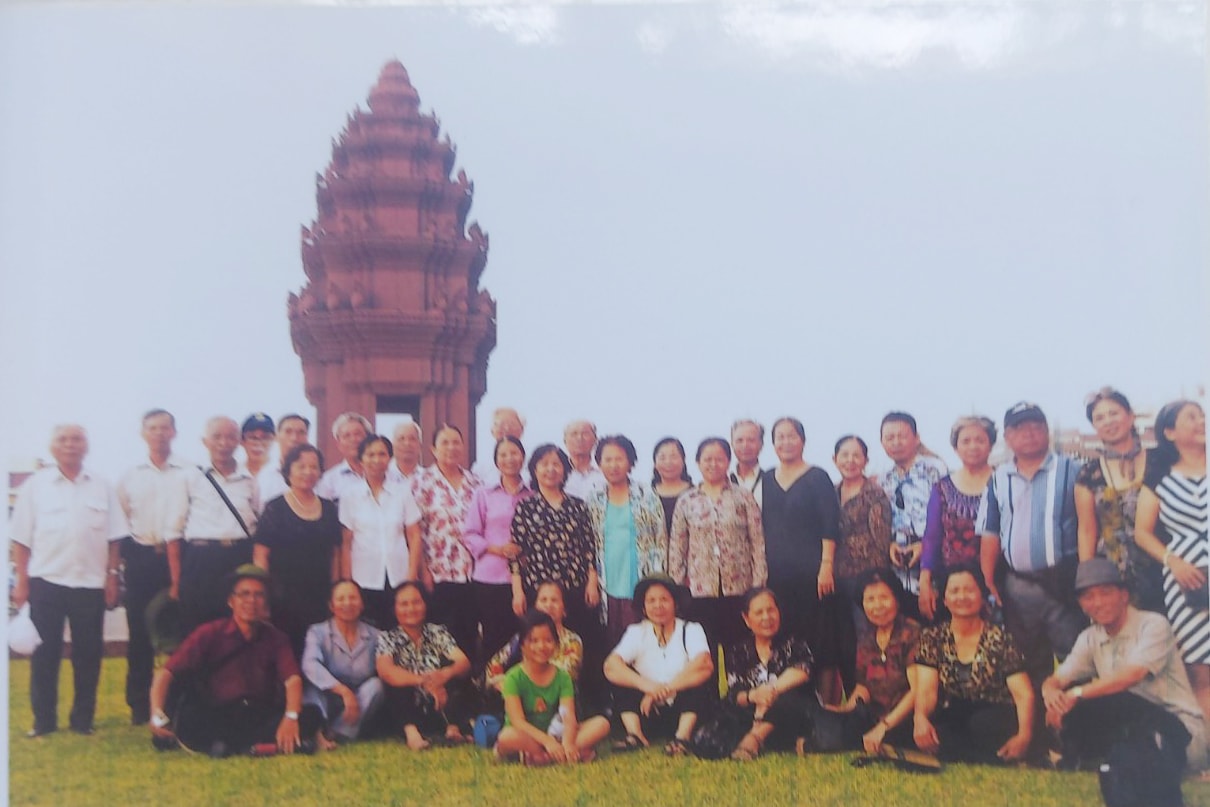 |
Meeting of Delegation K271 in Cambodia. |
In hardship and deprivation, the camaraderie bonded the brothers and sisters, sharing every last grain of rice and medicine. Kieu Ngoc That had a high fever, Tran Thanh Xuan and Nguyen Thi Bay, although small and weak, carried their backpacks and carried their comrades on a stretcher. Pham Van Mach carried his backpack in front of his stomach and carried Tham Thi Ha on his back. Dau Hung carried Nguyen Minh Tram on his back. Nguyen Thi Nhien had a high fever on her menstrual day and could not take care of her hygiene. Vo Minh Hue and Ngo Duc Tien bathed her, carried Nhien, put her under a tree, and sat down to watch the commandos so Nhien could rest. On May 24, 1970, Ha Van Tuan died, and the group was taken to another forest by liaison, but Nguyen Van Hay and Cat The Truyen stayed behind to dig the ground and bury their comrades.
On May 25, 1970, the group was surrounded by commandos on their way to find the rice warehouse. Dinh Dang Dinh was shot 3 times in the leg by the enemy, and his comrades carried Dinh out of the enemy encirclement. Also during this sweep, Nguyen Thi Thoa got lost in the forest, and at one point ended up in the middle of a B52 bomb site, lying starving in the middle of the forest. Luckily, they met a reconnaissance team of our army, and suspected that she was a phoenix girl commando of the puppet army lost in the forest, so they questioned her. Later, they learned that she was a female doctor from the Malaria Institute supporting the South, so they brought her back to the unit and gave her a small package of salt. At that time, salt grains were more precious than gold. In 1970, during that time of hunger and lack of salt, comrade Pham Xuan Dao sacrificed his life, and in 1972, comrade Nguyen Xuan Thang sacrificed his life after being carpet-bombed by enemy planes.
During the most difficult and fierce days, the comradeship of living and dying together, and the ideal of the South, determined to go to the Southern battlefield to contribute to the Southern revolution, shone brightly.
It was not until mid-October 1970 when the Central Bureau base could not be destroyed because of our heavy attacks and the American-puppet forces retreating that the entire group finally arrived at the Central Bureau base in Kampong Cham province (Cambodia). After several months of recuperation, the teachers were assigned to spread out to the bases and sub-committees of the Central Bureau. Some went to the B3 Region Education Sub-committee, some to the General Association of Overseas Vietnamese to open pedagogical and popular education classes. Four comrades from Nghe An were sent to the Tien River and Hau River areas along the border between us and our friends in the sticky rice fields, where we and the enemy intermingled. When the enemy withdrew, they opened pedagogical classes, when the enemy swept in, the teachers and students fled to the swamps. Two teachers, Tran Hanh and Thai Duy Trap, were captured and interrogated by the enemy but remained steadfast in their integrity and found every way to return to the base. Number 42 medical staff and doctors were assigned to the Regional Civil Medicine Department and then spread out to the Central Bureau hospitals.
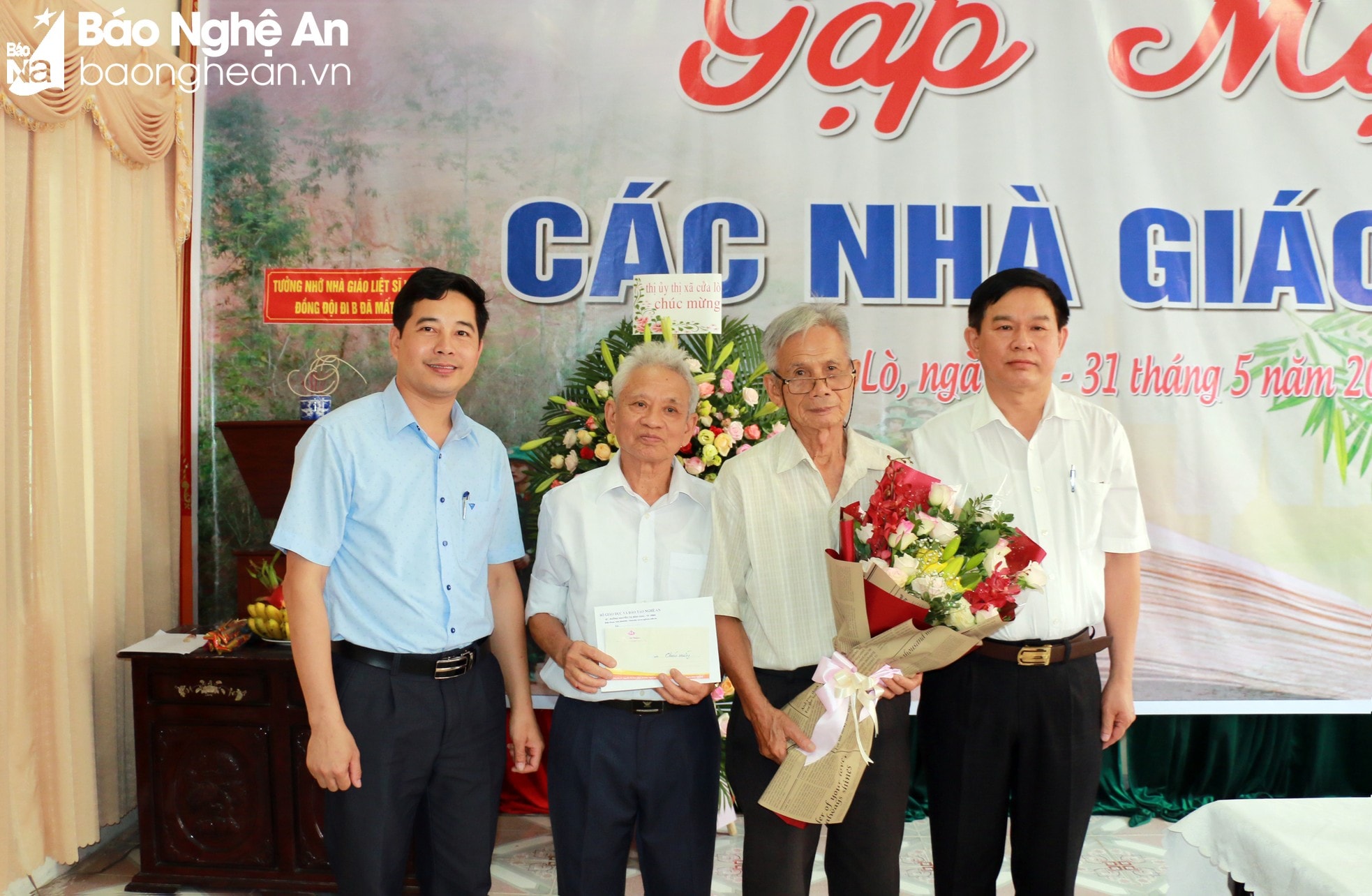 |
Leaders of the Department of Education and Training presented gifts to the Liaison Committee of Teachers Going to B. Photo: My Ha |
After the historic march that lasted 3 times longer than normal trips, when arriving at the Central Bureau base and spreading to the departments, mainly the regional Propaganda block such as: Radio Station, News Agency, Propaganda School, Pedagogical School, schools training martyrs' children such as: Ly Tu Trong, Le Van Tam... and civilian hospitals. Despite different circumstances, everyone integrated into the resistance life and made worthy contributions to the training of human resources and health care at the Central Bureau's headquarters. Some comrades were admitted right on the battlefield. In 1973, 3 comrades Kieu Ngoc That, Van Duc Yen, Dinh Van Tong sacrificed.
By April 30, 1975, the victory was complete. Most of the 136 comrades of the K271 group returned to join the Saigon-Gia Dinh Military Management Committee, and 5 comrades returned to neighboring provinces. Brothers and sisters still kept in touch like the years in the jungle of the war zone. Everyone thought: "Ten months of marching and nearly 6 years of fighting and serving in combat in the Southern battlefield were the most challenging times, but also the most beautiful years of youth."
In 1976, a foreign journalist interviewed teacher Nguyen Xuan Thuy: Do you have any regrets about the time you spent crossing Truong Son in the past? Teacher Nguyen Xuan Thuy immediately replied: “I have nothing to regret. Now, if the Party needs to cross Truong Son again, I am still ready!”
Loyal love of resistance war
When the K271 group arrived at the Central Bureau's war zone, out of 136 brothers and sisters, 65 had wives in the North and 71 were single sons and daughters. Those who had wives and children mostly had old and weak parents, young wives and children. The women at home sometimes did not receive letters from their husbands for two or three years, but they still took care of their parents and raised their children, waiting for the day of family reunification. There were 6 women whose husbands had died, a great loss. The wife of Mr. Pham Xuan Dao worked hard to raise 4 children. In 1973, their house was completely destroyed by American bombs. The villagers rebuilt 3 temporary houses for the mother and children, still anxiously waiting for their husbands until 1976 when they received death notices. There were 3 people who had just gotten married and had to separate. The 71 single sons and daughters, most of whom were young teachers and doctors.
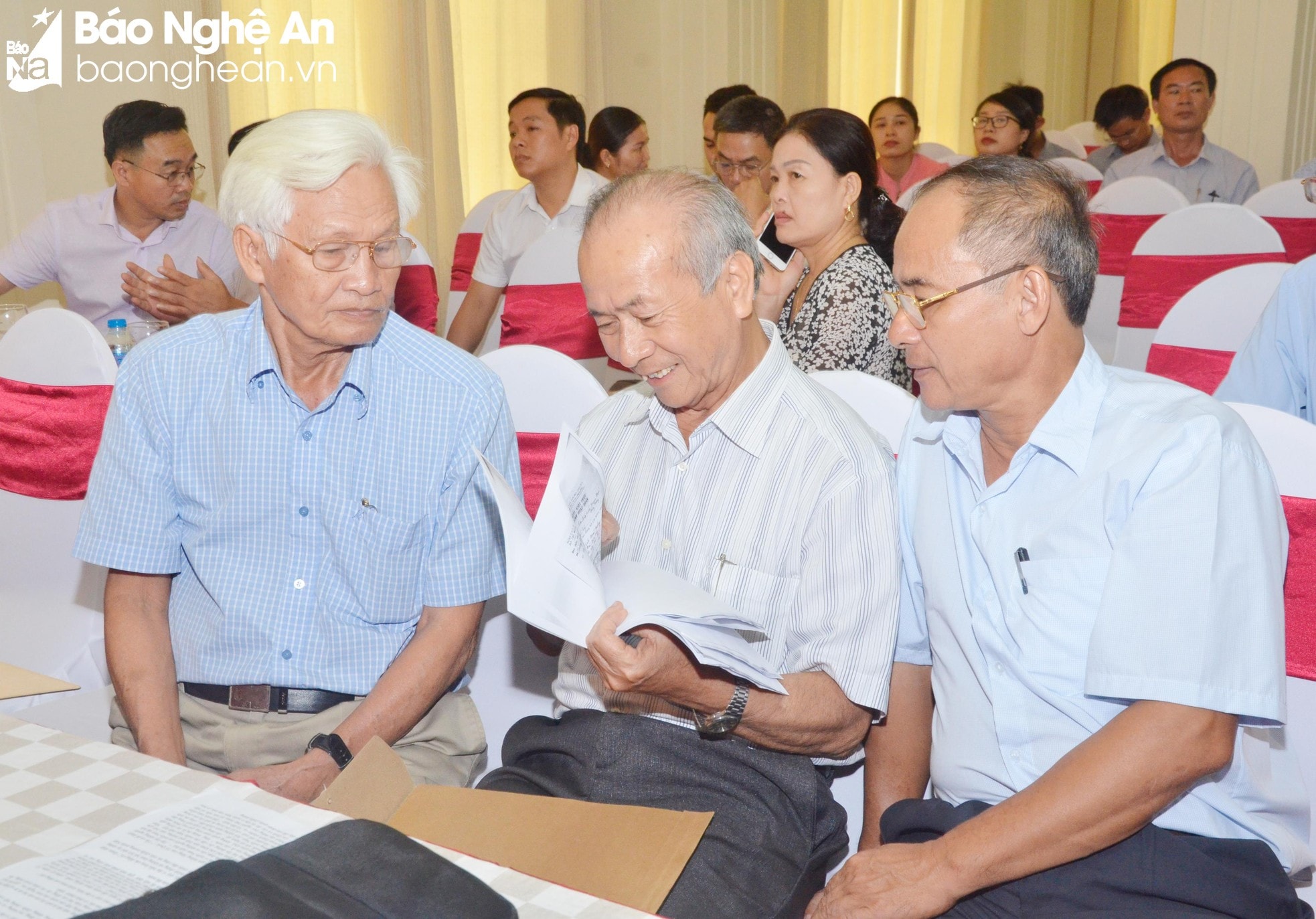 |
The joy of B-level officers when receiving their personal files. Photo: Thanh Le |
On the march across Truong Son during the years of working and fighting together in the Southern battlefield, many love relationships were connected, including 52 people, 26 couples who became husband and wife, the connection between the cadres of the two sectors of Education and Health in the same group. The husband and wife were both teammates and comrades, and the characteristics of the resistance cadres of these two sectors were both exemplary and honest, so there were no rich people.
There were simple weddings taking place in the jungle of the war zone, there were weddings taking place during several months of military rule, there were weddings taking place in the first years after liberation... 26 couples of resistance love, although their circumstances were different, all 26 couples still maintained their loyal love until old age. Group K271 became the civilian group with the largest number of resistance couples. That was also the pride and blessing of the group (comrades often jokingly called them the Y Duc - Y y Giao duc resistance couples).
Preserve and foster solidarity
After the country's reunification, with the connection of some core groups in the two localities of Ho Chi Minh City and Nghe An province and some neighboring provinces, every year on January 27 or April 30 - the anniversary of the Liberation of the South and the reunification of the country, the Liaison Committee of Group K271 often organizes meetings in small groups to encourage each other to share, sympathize and encourage each other in life.
Since the renovation, with more convenient means of transportation, the Liaison Committee has been able to connect meetings with comrades from the K271 Group in all three regions of the North, Central and South. We were very happy for each other when we left with only more than 20 party members. After April 30, 1975, all comrades were admitted to the party; many people studied 2-3 more university degrees, striving to become managers, teachers, medical practitioners, and members of local government committees. Some became journalists, poets, and scientific researchers. Wherever they were, whatever they did, they maintained their moral qualities, preserved and cultivated the revolutionary achievements that they, along with the K271 Group and many comrades, had sacrificed for.
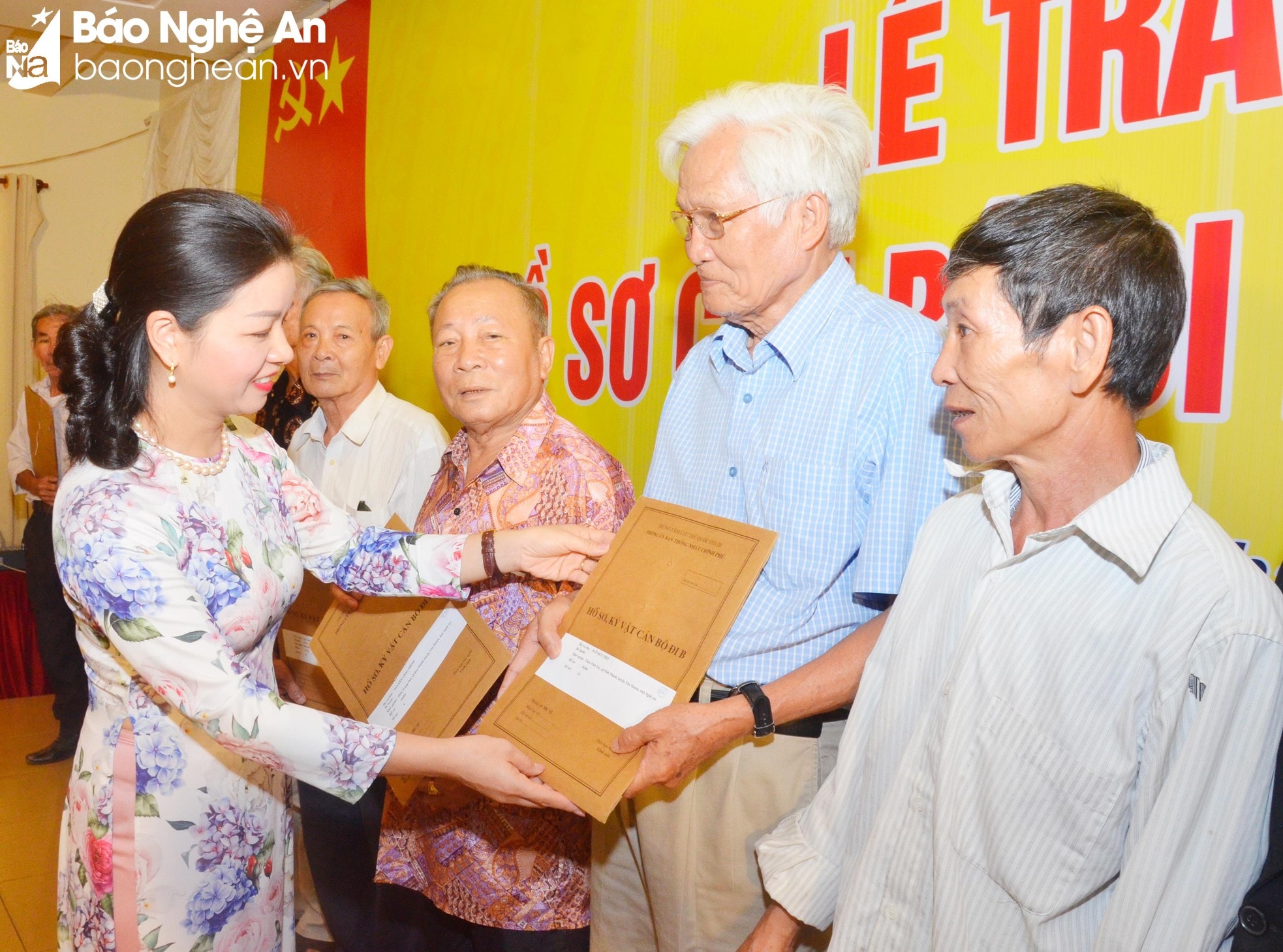 |
Deputy Director of the State Records and Archives Department Nguyen Thi Nga returns files to the 'B-going' officials. Photo: Thanh Le |
Each meeting is a happy day of old age, together recalling memories of youth, reminding each other to live happily, live healthily, live exemplary lives, and raise children and grandchildren to be good citizens. The criteria of the commemorative meetings of the group is to nurture and preserve the pure and loyal feelings of comrades in the resistance war, not to boast about achievements, not to talk about poverty or hardship, not to criticize or judge anyone, and to support each other in organizing happy days.
On the 53rd anniversary of crossing the Truong Son mountain range to participate in the battle and directly fight, among the more than 90 comrades who were contacted (15 people went to Zone 5 and Binh Tri Thien, 20 people lost contact due to changing jobs and places of residence), there were 6 martyrs and 40 comrades who passed away due to illness. The remaining 50 people who could be contacted before Tet 2023 were teachers Dinh Hoi, born in 1935, nearly 90 years old; the youngest person had also reached the age of ancient times. More than 30 people registered to attend the meeting to celebrate the 53rd anniversary of the group crossing the Truong Son mountain range to participate in the fight against the Americans to save the country in the coastal tourist town of Cua Lo on April 11 this year, happily and modestly admitting that they were happy people.
When we were young, we crossed Truong Son to save the country.
Now that we are old, how happy we are to meet each other!
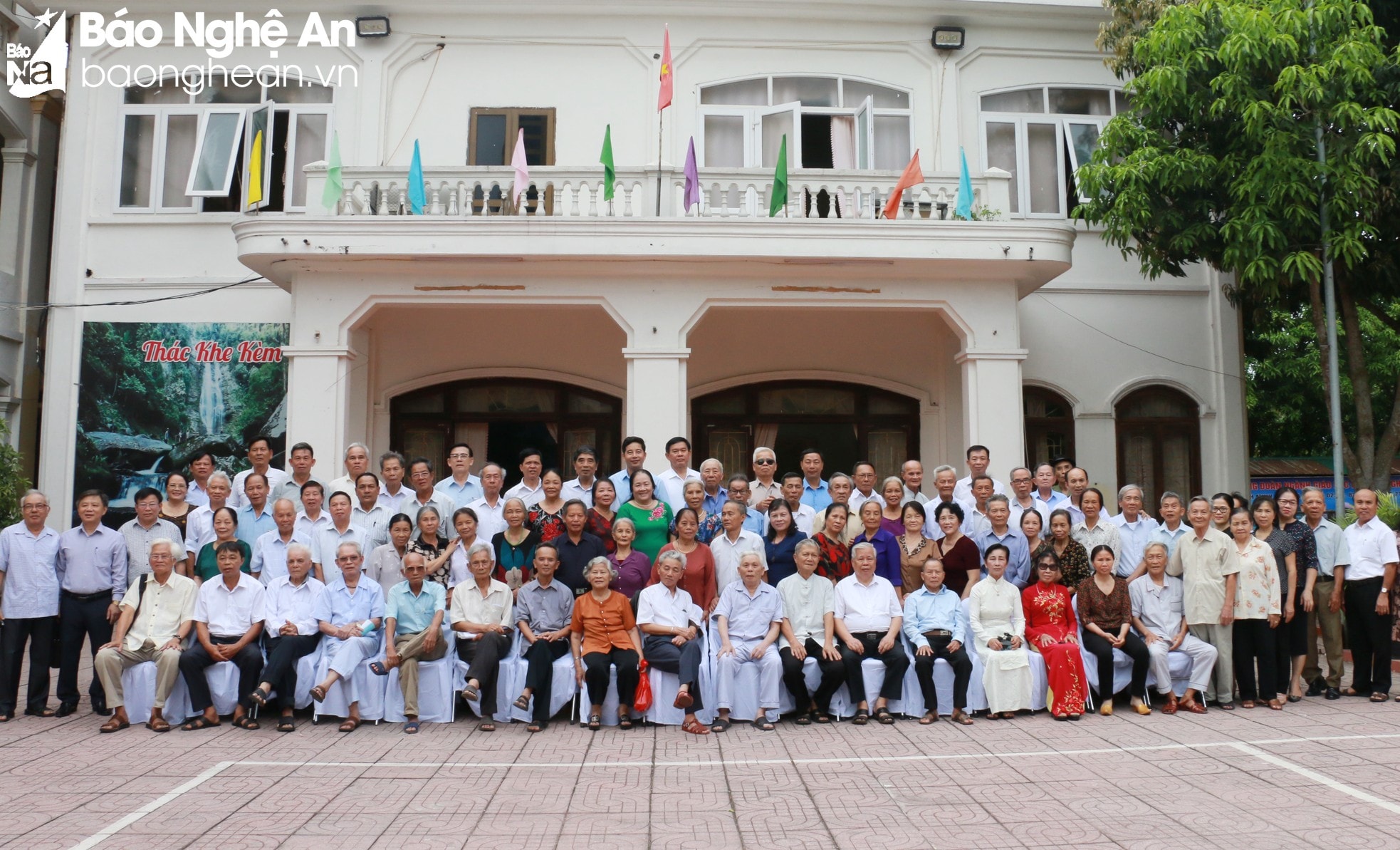 |
The Department of Education and Training, the Association of Former Teachers - Nghe An Education Trade Union organized a meeting for teachers who went to B in 2020. Photo: My Ha |

